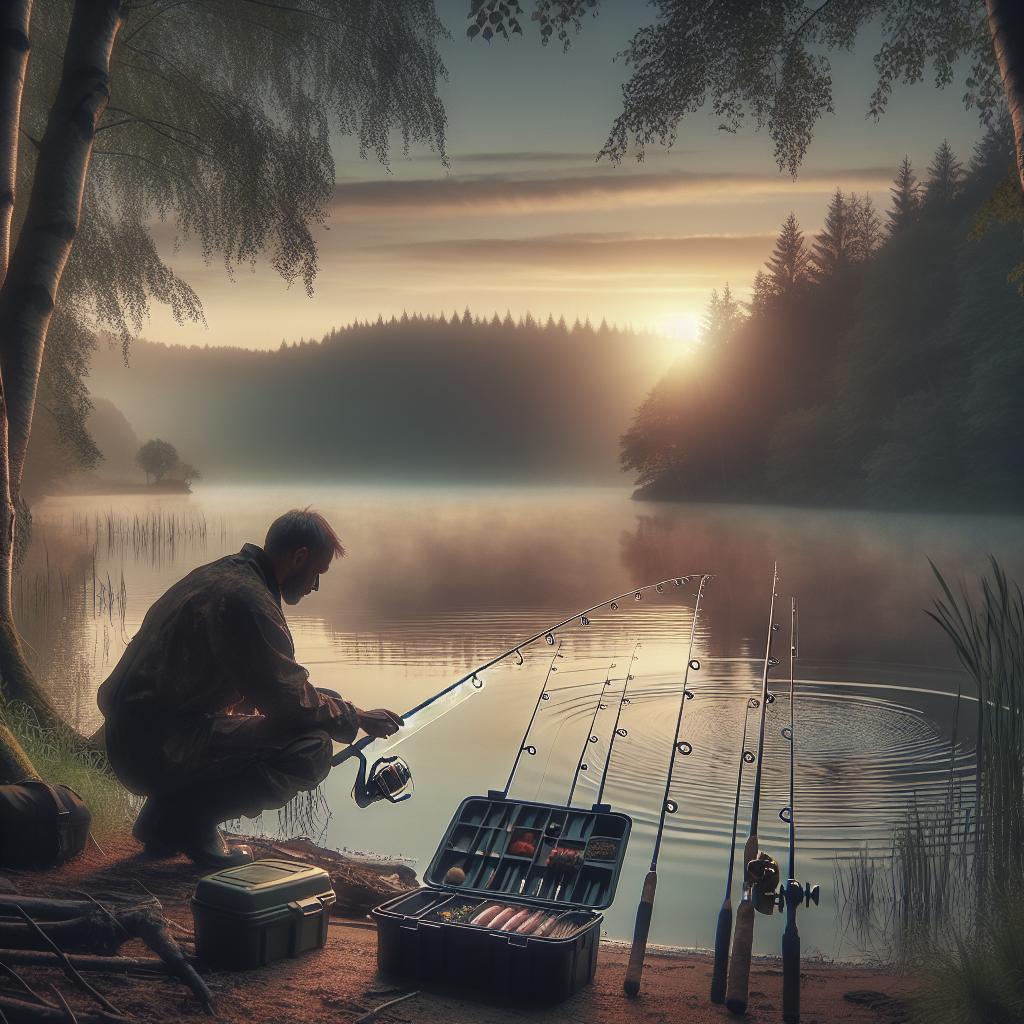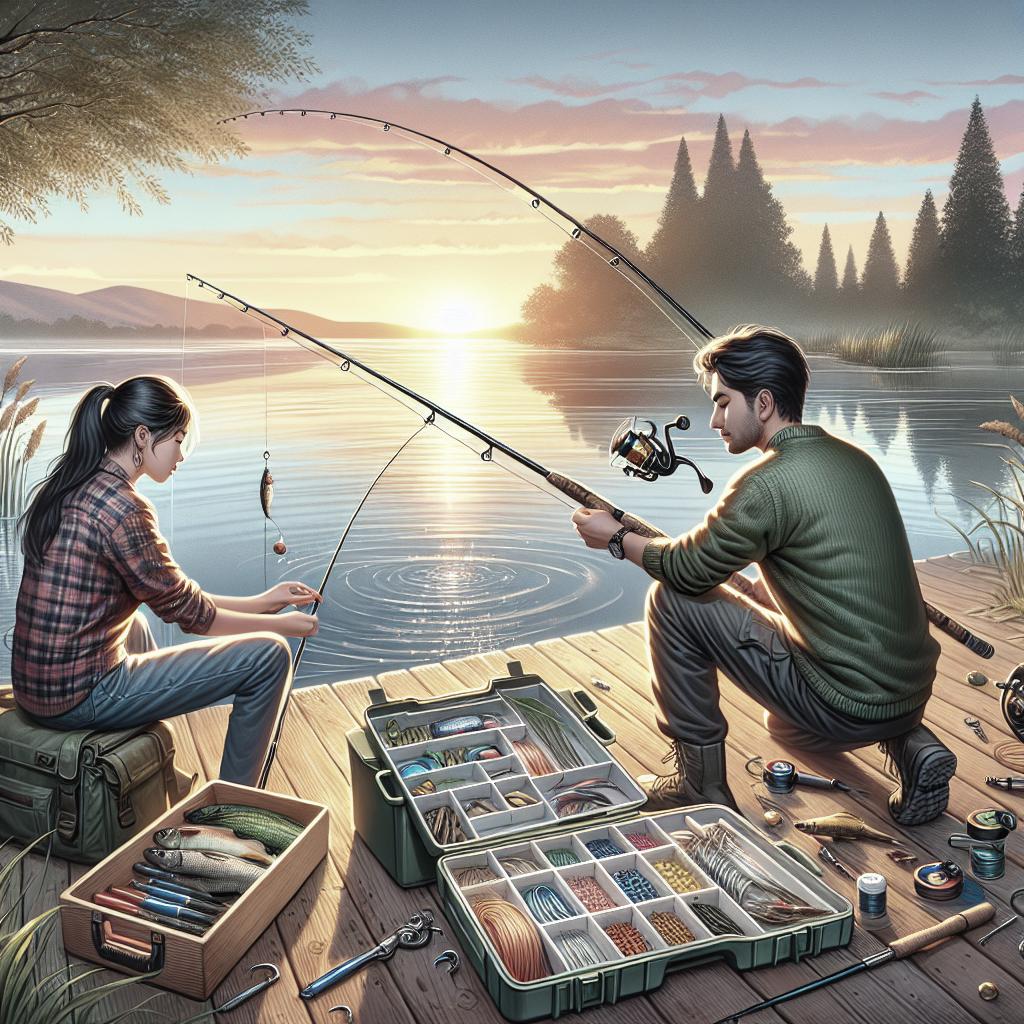### Fishing can be a great way to spend time outside with family and friends. Fishing is a relaxing and fulfilling outdoor activity that brings people closer to nature and provides an enjoyable experience for everyone, from kids to adults. Whether you’re rediscovering the joys of fishing or trying it out for the first time, this guide will equip you with the essential knowledge to fish responsibly and with confidence. We’ll cover all the basics, including choosing the right equipment, setting up your fishing line, casting techniques, safety measures, catch and release practices, and conservation efforts. So grab your gear and let’s dive into the world of fishing, where the possibilities are endless, and the rewards are priceless. Let’s embark on this exciting journey together! ### Checklist for Fishing in Fresh Water: Before heading out to your favorite fishing spot, it’s essential to prepare a checklist. One of the first things you’ll need is a valid fishing license, as most states require one for freshwater fishing. Research the regulations in your area to ensure you’re compliant. Additionally, check the weather forecast to dress appropriately and pack sunscreen, a hat, and sunglasses. Next, gather your gear: a fishing rod and reel, fishing line, tackle box, bait, and a first-aid kit in case of emergencies. A comfortable portable chair or fishing stool can make your experience more enjoyable, along with a cooler packed with drinks and snacks to keep you hydrated and energized. Lastly, consider taking a camera or smartphone to capture the scenic views and memorable moments during your fishing trip. Make sure everything is packed securely, and double-check your checklist before you leave to ensure you have all the essentials. ### Choosing and Setting Up Your First Fishing Rod Selecting the right fishing rod and reel as a beginner is crucial for a successful fishing experience. Start with a simple spinning combo, which offers versatility and ease of use. Consider a medium-light rod that’s about six to seven feet long, which provides flexibility and is suitable for various types of fish. Once you’ve chosen your rod, it’s time to set it up. First, attach the reel to the rod by aligning the foot of the reel with the reel seat on the rod, then tighten the locking mechanism. Thread the fishing line through each guide (the loops along the rod) starting from the tip and working your way down. Finally, secure the line to the reel with a knot and spool the line onto the reel using a smooth, even motion. When setting up your fishing rod, ensuring that everything is properly aligned and securely fastened is key. This foundational setup will enable you to practice casting and improve your skills with ease. ### Setting Up Your Hook, Line, and Sinker The combination of hook, line, and sinker plays a crucial role in your fishing success. Start by selecting an appropriate hook size based on the type of fish you’re targeting. Smaller hooks are generally effective for most species, allowing for more natural bait presentation. Next, tie the appropriate knot for securing your hook to the line. The improved clinch knot is popular among beginners for its simplicity and strength. Thread the line through the hook eye and wrap it around the main line five to seven times. Then, feed the end of the line through the loop near the hook and pull it tight. Finally, attach a sinker about a foot above the hook. This weight helps your bait sink to the desired depth while providing the proper balance for casting. Consider using a simple split shot sinker, which is easy to attach and adjust. With your hook, line, and sinker properly set up, you’re ready to catch fish with confidence and skill. ### Learning to Cast Casting is an essential skill every angler must master. Begin by holding the rod comfortably with both hands: one above the reel and the other below for stability. With your index finger on the rod’s shaft, gently lift the bail (the thin wire arm on the reel) to release the line. Next, using a smooth, fluid motion, swing the rod tip back to the 2 o’clock position, and then swiftly forward to the 10 o’clock position. Just before the rod reaches the 10 o’clock position, release your finger from the line, allowing it to unwind from the spool. This motion propels your bait or lure into the water. To complete the cast, flip the bail back down and begin retrieving the line slowly, allowing your bait to mimic the movements of natural prey. Practice this motion regularly to refine your technique, as successful casting is pivotal to having a rewarding fishing experience. ### Catch and Release Catch and release is an important practice that helps maintain fish populations and allows future generations to enjoy fishing. When you catch a fish, it’s vital to handle it with care to minimize stress and injury. Wet your hands before touching the fish, as dry hands can damage its protective slime coat. Remove the hook gently using pliers or a hook remover. If the hook is deep or difficult to remove, consider cutting the line close to the hook to minimize additional harm. Support the fish with both hands, ensuring it remains horizontal, and avoid touching its gills or eyes. Once ready to release the fish, hold it gently in the water, allowing it to recover. Move it slowly back and forth to help water pass through its gills, providing oxygen. Release the fish once it begins to swim away on its own. Practicing responsible catch and release helps sustain the environment and promotes ethical angling. ### Safety First! Safety should always be a top priority while fishing. Ensure you’re aware of your surroundings and any potential hazards, such as slippery rocks, uneven surfaces, or low-hanging branches. Wear non-slip shoes or boots to provide stability and prevent accidents. Keep a first-aid kit on hand to treat minor injuries like cuts or scrapes, and carry a whistle or signaling device in case you need to alert others or call for help. Always inform someone of your fishing location and estimated return time for peace of mind. Lastly, be mindful of weather conditions and the potential for sudden changes. In the event of lightning or extreme weather, prioritize safety and evacuate to a secure area promptly. By putting safety first, you can enjoy a worry-free fishing experience. ### Practicing Conservation Conservation is vital for preserving aquatic ecosystems and ensuring fishing remains a sustainable activity. Start by adhering to local regulations on fishing seasons, bag limits, and size requirements, which are designed to protect specific fish populations. Avoid littering by packing out everything you bring with you, including fishing line, packaging, and personal waste. Participate in local cleanup events to help maintain beautiful fishing spaces and promote environmental stewardship. Lastly, consider practicing selective harvesting, where you choose to keep only certain sizes or species while releasing others. This practice helps maintain balanced ecosystems and supports the health of fish populations. By actively engaging in conservation, you can contribute to the long-term sustainability of fishing and the larger environment. ### Go Fish! Armed with essential knowledge and tips, you’re now ready to embark on your fishing adventures! Whether you’re out on a tranquil lake or a bustling riverbank, remember to savor the moment and enjoy the peacefulness of the great outdoors. Fishing offers much more than just catching fish—it’s an opportunity to disconnect, relax, and value the company of family and friends. Explore different fishing locations, experiment with various baits and techniques, and, most importantly, have fun. With experience and practice, you’ll hone your skills, develop new strategies, and create cherished memories that will last a lifetime. So take a leap and dive into the incredible world of fishing. Catch the thrill and continue the tradition of this rewarding pastime. Go fish! | Lessons Learned | |——————-| | Key Skill | Description | | Booking a Fishing License | Ensures compliance with local regulations. | | Equipment Prep | Selecting the perfect beginner’s rod and reel, and setting up effectively. | | Casting Technique | Mastering fluid motion and line release for successful fishing. | | Catch and Release | Ethical practices to preserve fish populations. | | Safety Protocols| Prioritizing personal safety in uncertain environments. | | Conservation Practices | Engaging in eco-friendly habits to conserve ecosystems. | | Go Fish! | Enjoy the adventure and make long-lasting memories. |


